War Dogs
September 6, 2025 at 12:32 pm

On Veterans Day, we honor all Americans who serve or served in the military, past and present. On Memorial Day we remember all those who died in active military service. These are also days to remember the dogs of war. We must not forget their acts of duty and heroism. These are just five of the dogs who bravely served their country.
CHIPS
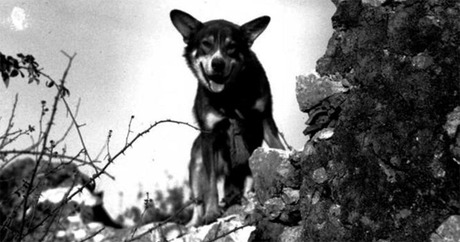
Chips, a Collie–German Shepherd–Siberian Husky mix, was the most decorated dog of World War II. This canine hero saw action in Germany, France, North Africa, and Sicily. Among his heroic exploits are his assault on an Italian machine-gun nest and his help in capturing 10 enemy Italian soldiers. For his actions, Chips was awarded the Distinguished Service Cross, the Purple Heart, and the Silver Star. Sadly, the commendations were revoked due to military policy at the time that did not allow such recognition for an animal. This brave canine soldier returned to his home in Pleasantville, N.Y., in 1945.
KAISER
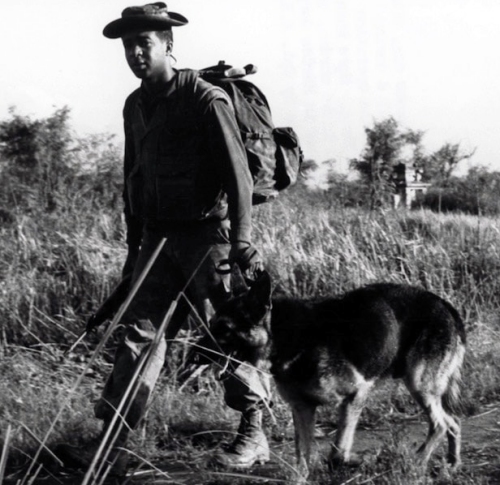
Kaiser was a German Shepard who served in Vietnam with his handler Marine Lance Cpl. Alfredo Salazar. Kaiser and Salazar did more than 30 combat patrols and participated in 12 major operations together. Kaiser was killed in action in 1966, while on a search-and-destroy mission with “D” Company. They were on patrol and were ambushed by enemy forces. Kaiser was hit in the initial barrage and died while trying to lick Salazar’s hand. Kaiser was the first war dog to be killed in action during the Vietnam War.
NEMO
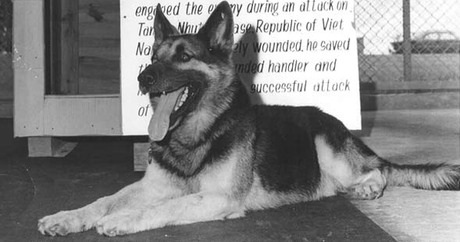
On December 4, 1966, Nemo, a German Shepard, and Airman 2nd Class Bob Thorneburg were on patrol at a cemetery near the company’s airbase in Vietnam when the two came under enemy fire. Nemo took a round to his eye, and Throneburg was shot in the shoulder after killing two Viet Cong guerillas. Despite his wound, Nemo attacked the enemy, giving Throneburg the precious minutes he needed to call in reinforcements. After Throneburg fell unconscious, Nemo crawled on top of his fallen handler’s body to protect him from harm. The dog would not let anyone touch Airman Thorneburg. It took a veterinarian to remove Nemo. Both Nemo and Throneburg recovered from their battle wounds. Nemo was later given a permanent retirement kennel. He died in December 1972. He was 11-years-old.
SMOKEY
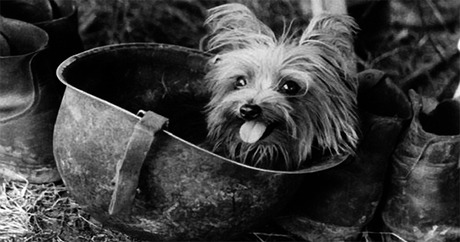
Not all dogs of war are big or male. Smokey was a female Yorkshire Terrier who saw action in the Pacific during World War II. Smokey was initially found in February 1944, abandoned in a foxhole in the jungles of New Guinea. This little fighter was included in a dozen combat missions and survived more than 150 air raids. Like famous World War I veterans Rags and Stubby, Smoky used her sharp sense of hearing to warn of incoming artillery shells. One of Smokey’s most famous exploits was at a crucial airstrip on the Philippine Island of Luzon. Smokey bravely pulled a telegraph wire through a narrow 70-foot pipe. Her actions saved construction time and kept workers and engineers safe from enemy fire. When not in harm’s way, Smoky entertained the troops with a variety of tricks and antics. Smokey lived to be 14-years-old. She passed away on February 21, 1957. Smokey’s adoptive guardian, William A. Wynne, chronicled her life in a lovingly written biography of the tiny heroine, “Yorkie Doodle Dandy”.
STUBBY
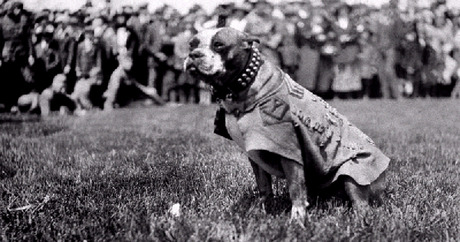
Probably the most famous war dog, this American Pit Bull Terrier was the only dog to be given the rank of sergeant. Found as a stray on the Yale campus in 1917, Stubby was smuggled to France during World War I by his adoptive guardian, Cpl. John Robert Conroy. Stubby’s service record includes participating in 17 battles, four offenses, and improving troop morale. He also used his keen senses to warn his unit of poison-gas attacks, incoming artillery fire, and to locate downed soldiers on the battlefield; Stubby even captured a German spy lurking in the trenches. The Pit Bull-centric website, StubbyDog.org, is named after him, as is the Stubby Award for Canine Heroism. Stubby died in his guardian’s arms in 1926.
RAGS
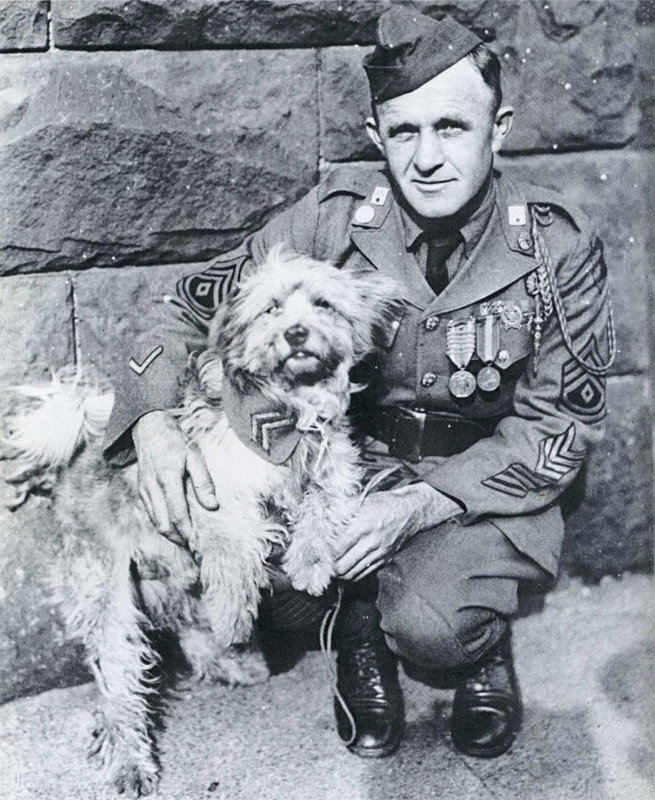
Rags, a small shaggy mixed-breed, was found on on the streets on Bastille Day of 1918 by Private James Donovan, a Signal Corps specialist with the American 1st Infantry. Private Donovan stumbled over what appeared to be a pile of rags, until the rags gave a sad whimper and a small bark. Within two weeks, both soldier and dog were sent off to the 2nd Battle of the Marne. Donovan's job was to string communications wire. When the wires were ripped and shellfire was still incoming, the only way to get messages through was by runner. But runners were frequently killed or wounded. Donovan realized that a little dog could do the job and survive. Rags soon learned to take messages towards the sound of the American guns. Near the end of the war, Donovan and Rags were in the Argonne Forest, bound in by a thick fog. Rags was sent back with a message. He had just set off when the Germans began firing mustard gas shells. Rags was mildly gassed and hit in the paw with a splinter from a concussion shell. His right ear was badly mangled by this same shell and a needle-like sliver of shell fragment was embedded under his right eye. An American infantryman found him dazed and confused and delivered both the wounded little dog and the message. Donovan had also been gassed, but far more severely. He was carried back to the rear and reunited with his dog. Rags had the shell splinters removed from his paw, but he would remain blind in his right eye and deaf in his right ear for the rest of his life. Donovan was not as fortunate. He died in 1919 from the lingering effects of the mustard gas. Rags was awarded a special ribbon recognizing his wartime service and achievements. His biography took its place among other official records of the Great War. Rags joined his beloved Private Donovan on March 22, 1936 at the remarkable age of twenty years old.
by Reverand Roberta Schwimmer
